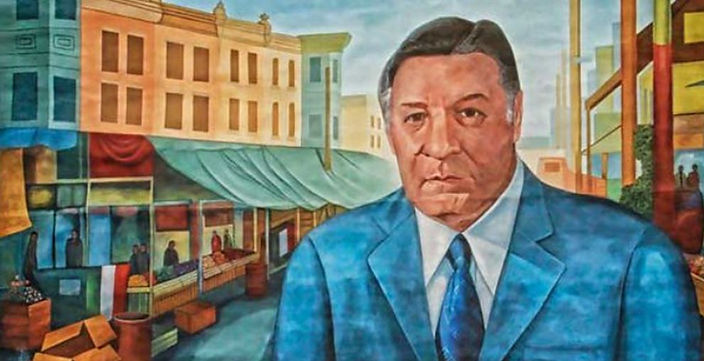
FRANK RIZZO
A MOST MEMORABLE MAYOR
Frank Rizzo was one of Philly's most famous police commissioners ever. In the 1970s, he became one of its most famous mayors ever.
But who was this man really?
His many detractors think they know who the real Frank Rizzo was.
To them, Rizzo was a beefy, badge-wearing racist thug who unleashed brutality on suspected troublemakers, especially African-Americans. A crass, uneducated halfwit whose public utterances ranged from merely stupid (“The streets in Philadelphia are safe – it’s only the people who make them unsafe”) to downright offensive (“I’m gonna make Attila the Hun look like a faggot”). A corrupt politician who tarnished the once-lofty Mayor’s office, who tried unsuccessfully to overturn the city’s 8-year term limit and become “Mayor for Life," and who once even took a public lie detector test (“If this machine says a man lied, he lied”) and failed it (“That machine is full of crap”).
His legions of followers could not disagree more.
To them, Frank Rizzo embodied the American Dream – a kid who survived the mean streets of South Philly and who, with hard work, determination, courage and charisma, rose through the ranks to become Philadelphia’s most prominent citizen. A handsome young cop known as “The Cisco Kid” who carried pearl-handled revolvers and kept law and order in our city during the hot angry summers of the 1960s, when other American cities burned and rioted. A big, lovable teddy bear of a man with a twinkle in his eye, who could light up a room with his colorful personality, sense of humor, and blunt wisdom (“A conservative is a liberal who got mugged”). A larger-than-life figure who restored civic pride and on whose watch the City not only celebrated joyous Stanley Cup parades and the nation’s Bicentennial, but began a culinary and cultural renaissance that continues to this day.
Philadelphia's thought police painted over the Frank Rizzo mural (shown below) that once stood on 9th Street near the Italian Market, and removed the Frank Rizzo statue (also shown below) from the plaza in front of Center City's Municipal Services Building. But the legend lives on – in the hearts of tens of thousands of Philadelphians who absolutely loved him, and tens of thousands of others who hated him.




